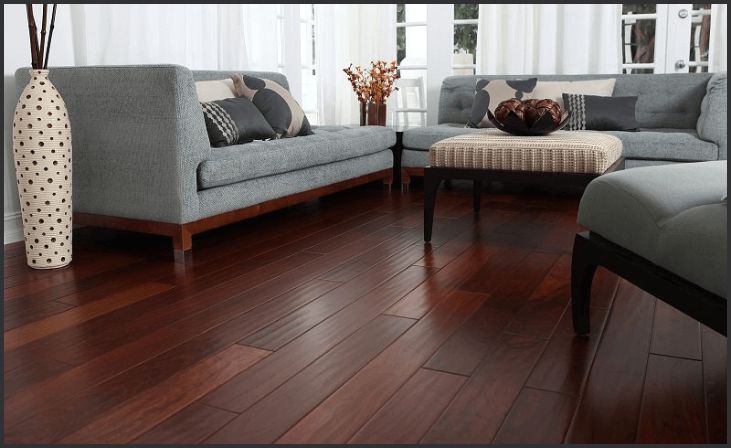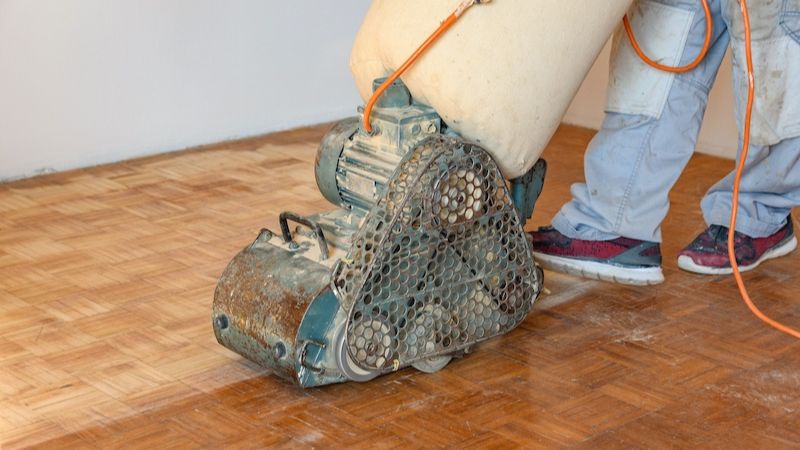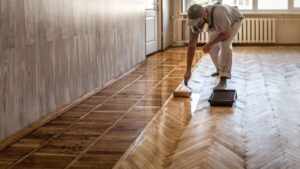How Often Should Wood Floors Be Sanded – Wood floors are renowned for their timeless elegance and durability, but maintaining their pristine condition requires regular care. Among the essential maintenance tasks is sanding, a process crucial for restoring the luster and smoothness of wooden surfaces.
Sanding involves removing the top layer of wood to eliminate scratches, dents, and other signs of wear, rejuvenating the floor’s appearance and extending its lifespan. However, determining how often wood floors should be sanded is not always straightforward. Several factors, including wood type, foot traffic, and environmental conditions, influence the frequency of sanding.
In this comprehensive guide, we’ll delve into the intricacies of wood floor maintenance, exploring the signs that indicate it’s time for sanding and providing expert recommendations on sanding frequency. Whether you’re a homeowner seeking to preserve the beauty of your hardwood floors or a property manager responsible for maintaining commercial spaces, understanding the nuances of sanding frequency is essential for keeping wood floors in optimal condition for years to come.
Importance of proper maintenance

Proper maintenance is paramount for preserving the beauty, integrity, and longevity of wood floors. Here’s why it’s crucial:
- Preservation of Appearance: Regular maintenance, including sanding, helps to retain the original beauty of wood floors by removing scratches, dents, and imperfections that can accumulate over time. This restores the floor’s smooth surface and natural luster, enhancing the overall aesthetics of the space.
- Prevention of Damage: Neglected wood floors are susceptible to damage from moisture, pests, and everyday wear and tear. Proper maintenance, such as sanding, not only repairs existing damage but also acts as a preventive measure against future issues, safeguarding the structural integrity of the flooring.
- Enhanced Durability: Wood floors that receive routine maintenance, including sanding when necessary, tend to have a longer lifespan compared to those that are neglected. By addressing minor issues before they escalate, proper maintenance helps to mitigate the need for costly repairs or premature replacement of the flooring.
- Improved Indoor Air Quality: Over time, dirt, dust, and allergens can accumulate on the surface of wood floors, negatively impacting indoor air quality. Regular maintenance, including sanding and refinishing, removes these contaminants, creating a healthier environment for occupants, particularly those with allergies or respiratory conditions.
- Preservation of Property Value: Well-maintained wood floors contribute to the overall value and appeal of a property. By investing in proper maintenance, homeowners and property managers can protect their investment and potentially increase the resale or rental value of the property.
Also, Read – What Rugs Are Best For Hardwood Floors
Factors Affecting Sanding Frequency
Factors influencing the frequency of sanding for wood floors are multifaceted and encompass various elements. Here’s an overview:
- Type of Wood Flooring: Different wood species have varying levels of hardness and durability. Hardwoods like oak or maple may require sanding less frequently compared to softer woods like pine or bamboo.
- Foot Traffic: Areas with high foot traffic, such as entryways, hallways, and living rooms, tend to experience more wear and tear, necessitating more frequent sanding to maintain the floor’s appearance and integrity.
- Wear and Tear: Signs of wear, including scratches, dents, and uneven surfaces, indicate the need for sanding. The extent of wear and tear determines how often sanding is required, with heavily damaged floors needing more frequent attention.
- Environmental Factors: Environmental conditions, such as humidity levels, temperature fluctuations, and exposure to sunlight, can impact the condition of wood floors. High humidity may cause wood to expand and contract, leading to warping or buckling, while prolonged exposure to sunlight can cause fading or discoloration, prompting the need for sanding to restore the floor’s appearance.
- Previous Maintenance History: The frequency of previous sanding and refinishing treatments also affects sanding frequency. Floors that have been well-maintained with regular sanding and refinishing may require less frequent attention compared to neglected floors.
- Finish Type: The type of finish applied to the wood floor, such as oil-based or water-based polyurethane, affects its durability and longevity. Floors with more durable finishes may require less frequent sanding compared to those with less durable finishes.
- Personal Preferences: Some homeowners or property managers may prefer to maintain their wood floors in pristine condition, opting for more frequent sanding to ensure optimal appearance and performance, while others may be more lenient with maintenance schedules.
How Often Should Wood Floors Be Sanded?

The frequency of sanding wood floors depends on several factors including the type of wood, the amount of foot traffic, and the general wear and tear. Typically, wood floors should be sanded every 7 to 10 years to maintain their appearance and structural integrity.
- Type of Wood: Hardwood floors, such as oak or maple, tend to withstand wear better than softer woods like pine. Therefore, hardwood floors may require sanding less frequently, perhaps every 10 years, whereas softer woods might need sanding every 7 years or so.
- Foot Traffic: High-traffic areas, like hallways and living rooms, will wear out faster than less-used areas. If you have pets or children, or if your home sees a lot of visitors, your floors may need sanding more frequently.
- Condition of the Finish: If the finish on your wood floors is wearing away, showing scratches and dull spots, it may be time to sand and refinish them. Signs of wear include visible scratches, fading, or unevenness in the finish.
- Appearance: Ultimately, the decision to sand your wood floors comes down to how they look and feel. If you’re unhappy with the appearance of your floors, whether due to scratches, stains, or an uneven finish, it’s probably time to consider sanding.
- Professional Inspection: It’s a good idea to have a professional inspect your floors periodically. They can assess the condition of the wood and the finish, and advise you on whether sanding is necessary.
Conclusion
In conclusion, the frequency of sanding for wood floors depends on various factors such as wood type, foot traffic, wear and tear, environmental conditions, and previous maintenance history.
By recognizing the signs indicating the need for sanding and adhering to a proactive maintenance schedule, homeowners and property managers can preserve the beauty, durability, and value of their wood floors for years to come.
Whether opting for DIY sanding or professional services, prioritizing proper maintenance ensures that wood floors remain a timeless and elegant feature of any space.
FAQs
How often should wood floors be sanded?
The frequency of sanding depends on factors like wood type, foot traffic, and wear and tear. Generally, it’s recommended every 7-10 years for residential floors and more frequently for commercial spaces.
How can I tell if my wood floors need sanding?
Signs include visible scratches, dents, uneven surfaces, or loss of protective finish. If the floor looks worn despite cleaning and maintenance, it might be time for sanding.





